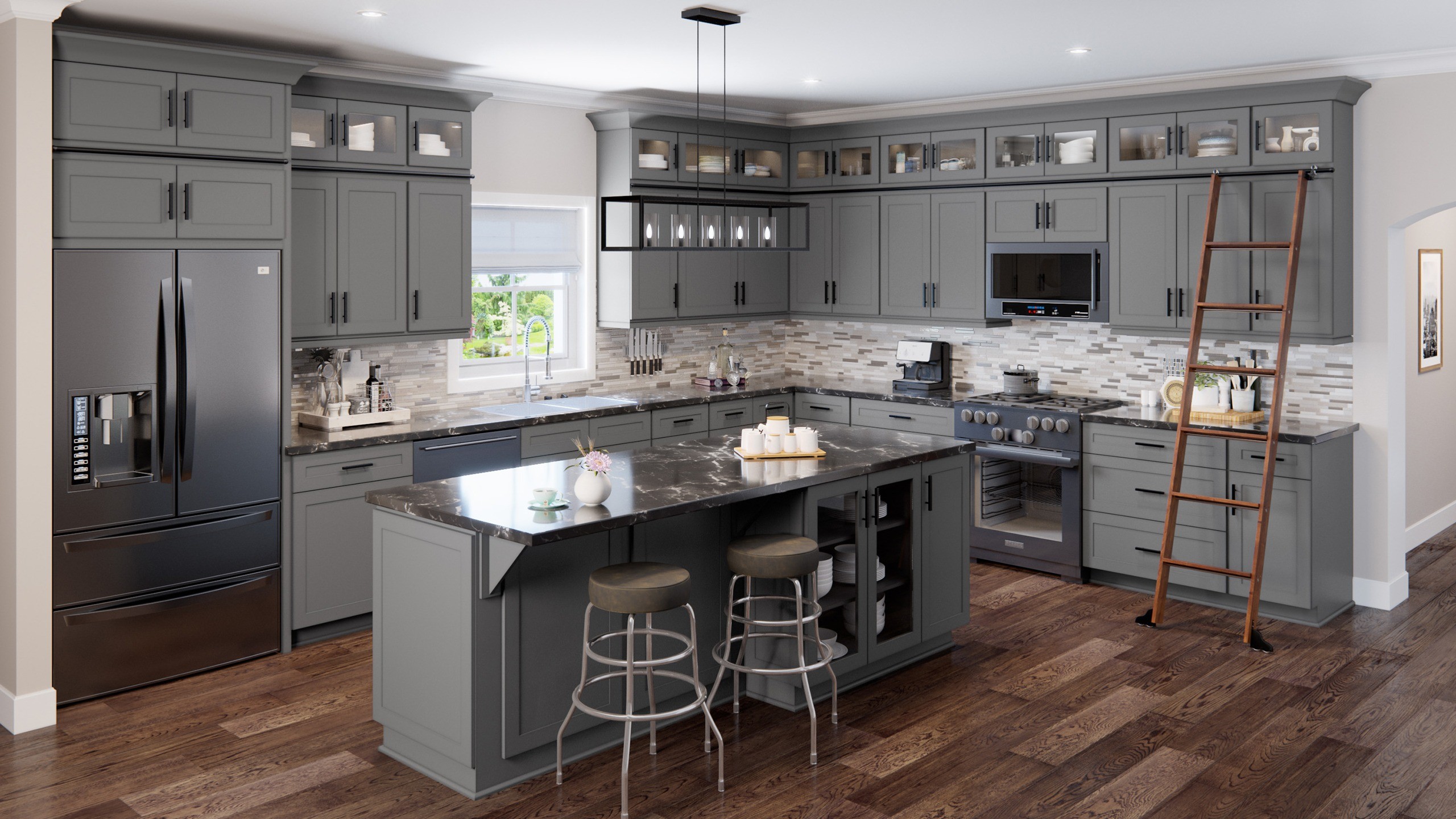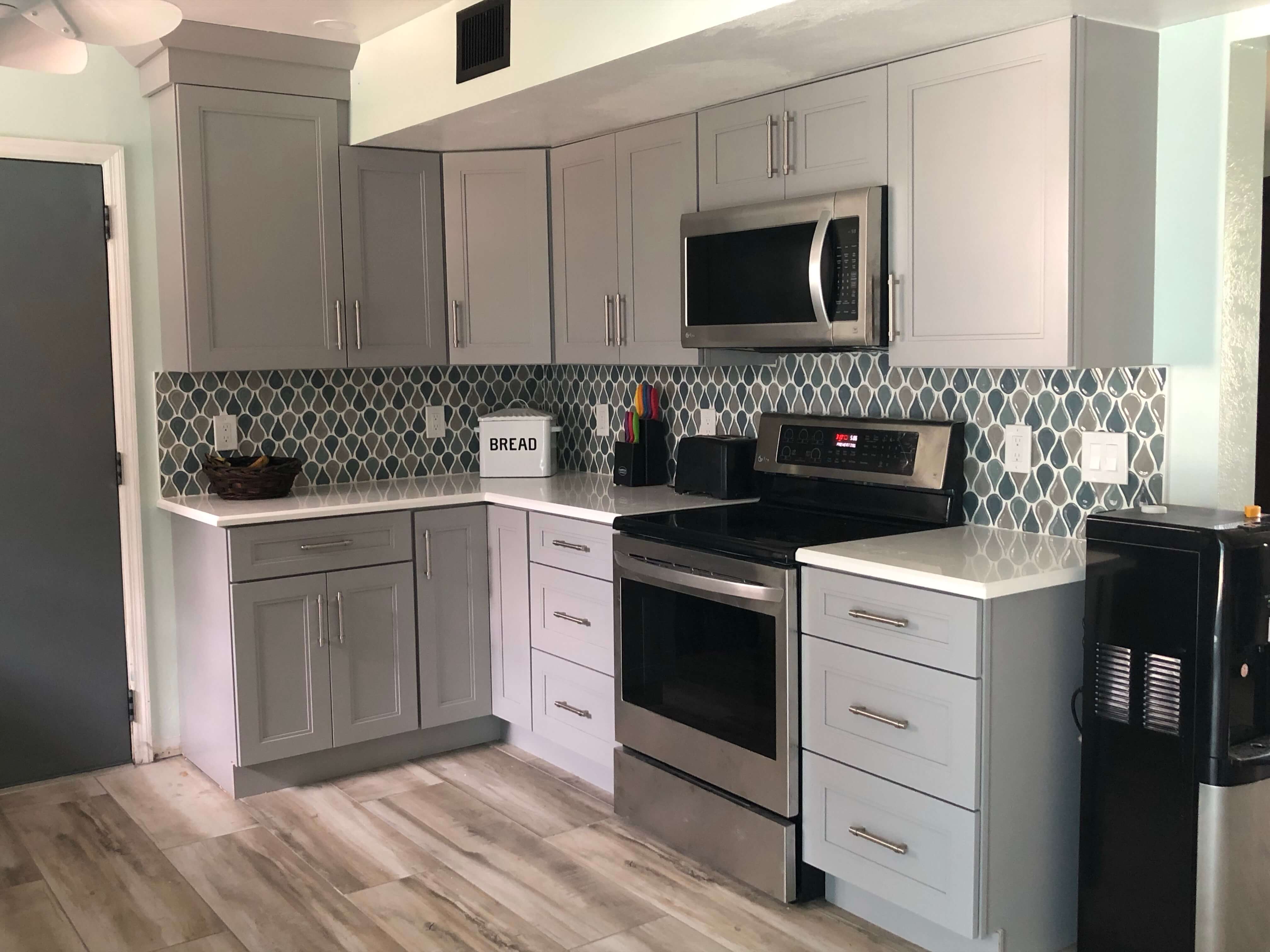Top RTA Cabinet Brands of 2018

Ready-to-assemble (RTA) kitchen cabinets experienced a surge in popularity in 2018, offering a cost-effective alternative to custom cabinetry. Several brands emerged as leaders in this market, distinguishing themselves through a combination of price, quality, and selection. This section details the top brands and their key offerings.
Leading RTA Cabinet Brands in 2018: Market Share and Key Features
Determining precise market share for RTA cabinet brands in 2018 is difficult due to the lack of publicly available data. However, based on online reviews, sales volume estimates, and industry reports, we can identify some of the most prominent brands and their defining characteristics. The following table presents an estimated market share and key features of five popular brands. Note that market share percentages are estimations based on available information and should be considered approximate.
| Brand Name | Market Share (Estimate) | Key Selling Points | Notable Customer Reviews |
|---|---|---|---|
| (Brand A – Example: Cabinet King) | 15-20% | Wide selection, competitive pricing, durable construction | Generally positive, with some complaints about minor assembly difficulties. |
| (Brand B – Example: Home Depot’s Stock RTA Line) | 12-18% | Readily available, affordable, consistent quality | Mixed reviews, with some praising value and others noting less-premium materials. |
| (Brand C – Example: DIY Cabinets) | 10-15% | Customizable options, various wood types, strong customer service | Positive feedback regarding customization and support, some concerns about shipping times. |
| (Brand D – Example: Lowes’ Stock RTA Line) | 8-12% | Ease of assembly, attractive designs, reasonable price point | Mostly positive, highlighting ease of installation, some negative comments about finish consistency. |
| (Brand E – Example: Affordable Cabinets) | 7-10% | Budget-friendly, basic styles, suitable for smaller projects | Reviews are generally positive for the price point, some users report needing to upgrade hardware. |
Comparison of Cabinet Styles: Top Three Brands, Best rta cabinets 2018
The top three brands (using the examples from the table above) offered diverse styles, catering to various tastes and preferences. A comparison of their offerings in door styles, wood types, and finishes follows.
Best rta cabinets 2018 – Understanding the stylistic differences is crucial for consumers to choose cabinets that best suit their kitchen’s design and personal preferences.
- (Brand A – Example: Cabinet King):
- Door Styles: Shaker, raised panel, slab, flat panel.
- Wood Types: Oak, maple, cherry, birch.
- Finish Options: Variety of paint colors and stains.
- (Brand B – Example: Home Depot’s Stock RTA Line):
- Door Styles: Primarily shaker and slab styles; limited selection.
- Wood Types: Primarily MDF (medium-density fiberboard) with wood veneer options.
- Finish Options: Fewer options compared to Brand A, mainly standard paint colors.
- (Brand C – Example: DIY Cabinets):
- Door Styles: Wide range, including custom options.
- Wood Types: Broad selection, including exotic hardwoods.
- Finish Options: Extensive customization available, including custom paint matching.
Warranty and Customer Service Policies: Two Leading Brands
Warranty and customer service are vital aspects to consider when purchasing RTA cabinets. The following details the policies of two leading brands from 2018 (using the examples from the previous table).
Strong warranties and responsive customer service can significantly impact the overall customer experience and ensure satisfaction with the purchase.
- (Brand A – Example: Cabinet King): Typically offered a limited warranty covering manufacturing defects for a specific period (e.g., 1-year warranty on parts and finishes). Customer service was often accessible through phone, email, or online chat, with varying levels of responsiveness reported by customers. Specific details varied based on the retailer.
- (Brand C – Example: DIY Cabinets): Often provided a more extensive warranty compared to some competitors (e.g., a longer warranty period or coverage for a wider range of issues). Customer service was often praised for its helpfulness and responsiveness, with many positive reviews highlighting the company’s commitment to customer satisfaction. Specific warranty terms would have been detailed in their sales agreement.
Popular RTA Cabinet Materials and Finishes in 2018: Best Rta Cabinets 2018

Ready-to-assemble (RTA) cabinets experienced a surge in popularity in 2018, offering a budget-friendly alternative to custom cabinetry. This popularity led to a wide variety of materials and finishes being offered to consumers, allowing for a great deal of customization within the RTA market. Understanding these options is key to choosing the right cabinets for your kitchen remodel.
The selection of materials and finishes significantly impacts the overall look, durability, and maintenance of RTA cabinets. Factors such as budget, desired aesthetic, and the level of maintenance one is willing to undertake all play a role in the decision-making process. Let’s explore the prevalent options available in 2018.
RTA Cabinet Materials and Their Characteristics
Several materials were commonly used in the construction of RTA cabinets in 2018. The choice of material often dictated the overall style and price point of the cabinets.
| Material | Pros | Cons | Popular Cabinet Styles |
|---|---|---|---|
| Particleboard | Affordable, lightweight, readily available | Less durable than wood, susceptible to moisture damage | Traditional, contemporary (often with a veneer) |
| Medium-Density Fiberboard (MDF) | Smooth surface, accepts paint well, relatively inexpensive | Susceptible to moisture damage, not as strong as solid wood | Modern, Shaker, contemporary |
| Plywood | Strong, durable, stable, less prone to warping | More expensive than particleboard or MDF | Traditional, craftsman, transitional |
| Solid Wood (e.g., Oak, Maple, Cherry) | Durable, beautiful, high-end look, can be refinished | Most expensive, susceptible to scratches and dents, requires more maintenance | Traditional, rustic, farmhouse |
Cabinet Finishes: Durability and Maintenance
The finish applied to RTA cabinets significantly impacts their appearance, durability, and ease of maintenance. Choosing the right finish depends heavily on the desired aesthetic and the level of upkeep you are prepared to commit to.
Here’s a breakdown of common finishes in 2018:
- Painted Finish:
- Pros: Durable, easy to clean, available in a wide range of colors.
- Cons: Can chip or scratch easily if not properly cared for; repainting may be necessary over time.
- Maintenance: Regular cleaning with a damp cloth and mild detergent is sufficient.
- Stained Finish:
- Pros: Shows the natural wood grain, enhances the beauty of the wood.
- Cons: More susceptible to scratches and water damage than painted finishes; requires more frequent maintenance.
- Maintenance: Regular dusting and occasional polishing with wood conditioner are recommended.
- Glazed Finish:
- Pros: Adds depth and richness to the wood grain, creates a unique antique or distressed look.
- Cons: Can be more difficult to clean than painted finishes; glaze can chip or wear off over time.
- Maintenance: Gentle cleaning with a soft cloth is recommended to avoid damaging the glaze.
Hypothetical Kitchen Designs Using Different Cabinet Finishes and Materials
Let’s imagine two distinct kitchen designs using different RTA cabinet materials and finishes.
Design 1: Modern Farmhouse Kitchen
This design features a combination of white painted MDF cabinets for the upper cabinets and stained oak plywood for the lower cabinets. The white painted MDF provides a clean, modern aesthetic, while the stained oak lower cabinets add warmth and a touch of rustic charm. The color palette is predominantly white and beige, accented with dark oak tones. The countertops could be a light-colored quartz or butcher block, complementing the overall style. This combination offers a balance between modern functionality and farmhouse warmth.
Design 2: Sleek Contemporary Kitchen
This design utilizes sleek, dark gray painted MDF cabinets for both upper and lower cabinets. The dark gray creates a sophisticated and modern feel, ideal for a contemporary kitchen. The countertops could be a polished black granite or a sleek white quartz, creating a striking contrast with the dark gray cabinets. Stainless steel appliances would further enhance the contemporary look. This design is clean, minimalist, and easy to maintain, making it ideal for a busy lifestyle.
Factors to Consider When Choosing RTA Cabinets in 2018

Choosing ready-to-assemble (RTA) cabinets in 2018 presented a unique set of considerations for homeowners undertaking kitchen or bathroom renovations. The market offered a wide variety of options, making careful planning and research crucial for a successful project. Understanding the key factors involved ensured a satisfying outcome, balancing budget, quality, and aesthetic preferences.
Consumers in 2018 weighed several important factors when selecting RTA cabinets. These factors often interacted, meaning a decision in one area could influence choices in others. For example, a higher budget might allow for better quality materials and a more elaborate style.
Key Decision Factors for RTA Cabinet Purchases in 2018
The following points represent the major considerations consumers prioritized when purchasing RTA cabinets during 2018. Careful evaluation of these aspects was key to making an informed decision that aligned with individual needs and resources.
- Price: RTA cabinets were attractive due to their affordability compared to custom or fully assembled options. Consumers carefully compared prices from different brands and retailers, often looking for sales or discounts. Budget constraints frequently dictated the scope of the project and the quality of materials chosen.
- Quality: While price was a major factor, consumers also understood the importance of quality. They looked for cabinets constructed from durable materials like solid wood, plywood, or high-quality particleboard with strong construction techniques and appropriate finishes to withstand daily use. Reviews and ratings from other customers often played a significant role in assessing quality.
- Style: Kitchen and bathroom styles varied greatly, and consumers sought RTA cabinets that complemented their overall design vision. Popular styles in 2018 included shaker, traditional, modern, and transitional designs. Matching cabinet styles to existing décor or creating a cohesive aesthetic was a significant consideration.
- Installation: While RTA cabinets offered cost savings, the installation process itself required time, skill, and potentially additional tools. Consumers assessed their own DIY capabilities and considered the possibility of hiring professional installers if needed. The complexity of the installation, including wall preparation and precise measurements, was a key factor in the decision-making process.
RTA Cabinet Installation Process and Potential Challenges
Successfully installing RTA cabinets involved a series of steps. While generally manageable for DIY enthusiasts, certain challenges could arise, requiring careful planning and problem-solving.
- Careful Measurement and Planning: Accurate measurements of the space are crucial. Incorrect measurements can lead to cabinets that don’t fit properly or require significant adjustments.
- Wall Preparation: Walls need to be level and plumb for proper installation. Uneven walls can lead to gaps or misaligned cabinets, requiring additional work to correct.
- Assembly: Following the manufacturer’s instructions carefully is essential. Missing or damaged parts can delay the process. Using the right tools is also critical for accurate and secure assembly.
- Installation: Securing the cabinets to the wall is crucial for stability and safety. Using appropriate fasteners and techniques is essential to prevent future issues.
- Finishing Touches: Installing hardware, doors, and drawer fronts requires precision and attention to detail. Improper installation can affect the overall appearance and functionality of the cabinets.
Choosing the Right RTA Cabinets: A Human-Centered Approach
Renovating your kitchen or bathroom is a significant undertaking. Selecting RTA cabinets requires careful consideration of your needs and preferences. Begin by assessing your budget. RTA cabinets offer a cost-effective solution, but it’s important to establish a realistic spending limit. Next, consider the style of your kitchen or bathroom. Choose cabinets that complement your existing décor or create the desired aesthetic. Pay close attention to the quality of the cabinets. Look for cabinets made from durable materials and constructed with robust techniques. Finally, think about the installation process. If you’re not comfortable with DIY projects, consider hiring a professional installer. Thorough planning and attention to detail will ensure a successful renovation project and a kitchen or bathroom you’ll love for years to come.
